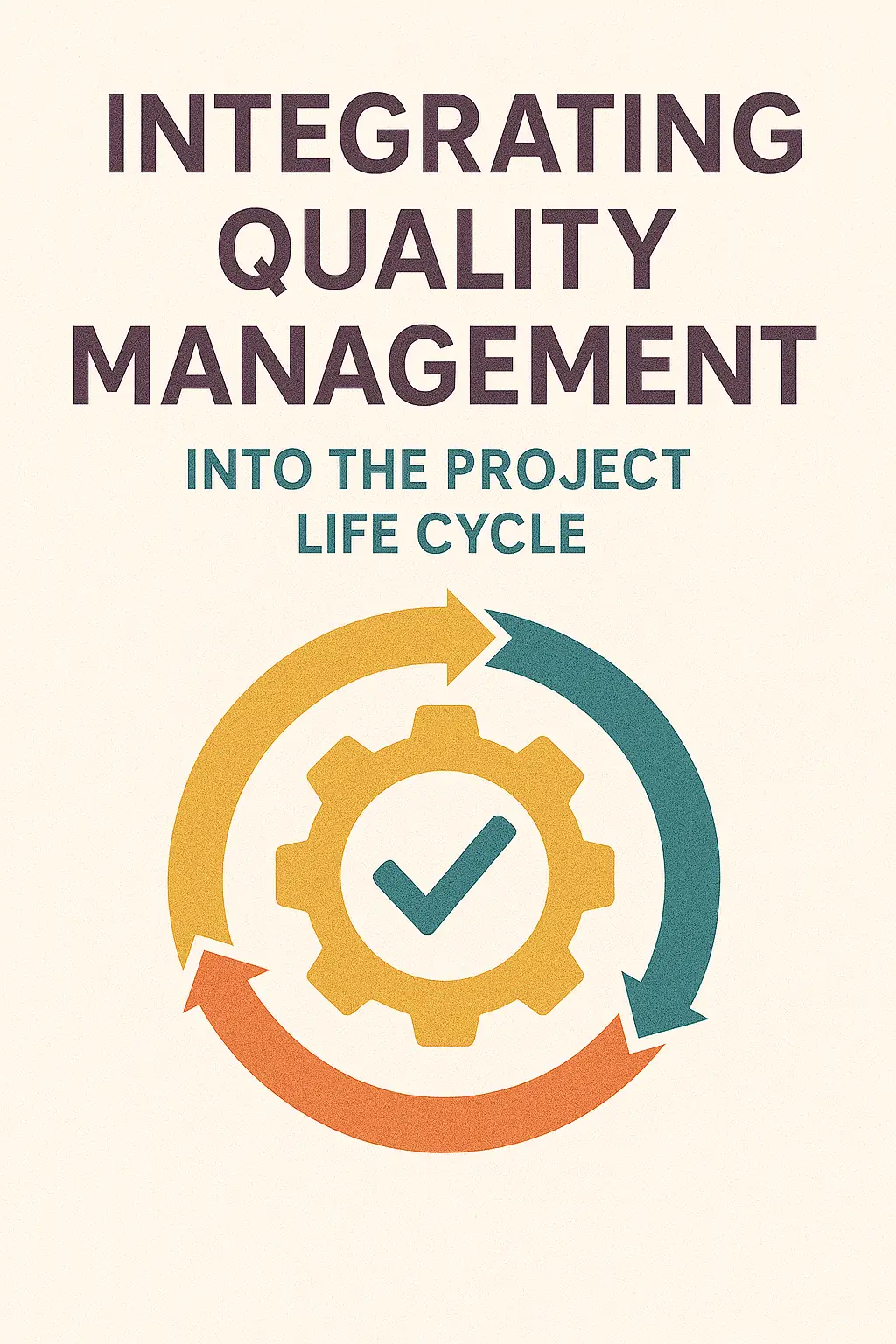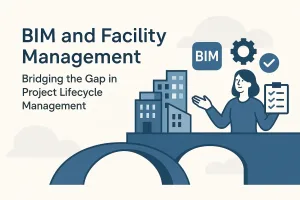Introduction to Life Cycle Management Process
Understanding the project life cycle is crucial for ensuring that quality is maintained throughout the entire process. The project life cycle consists of several distinct phases: initiation, planning, execution, monitoring, and closure. Each of these phases plays a vital role in the overall success of a project, and integrating quality management into each stage is essential for achieving desired outcomes.
Defining the Project Life Cycle and Its Phases
- Initiation: This is the first phase where the project is defined at a high level. Key activities include identifying project stakeholders, establishing project objectives, and conducting feasibility studies. The goal is to determine whether the project is viable and aligns with organizational goals.
- Planning: In this phase, detailed planning takes place. Project managers develop a comprehensive project plan that outlines the scope, resources, timelines, and budget. This phase is critical for setting clear expectations and establishing quality standards that will guide the project.
- Execution: During execution, the project plan is put into action. Teams carry out the tasks defined in the planning phase, and resources are allocated accordingly. Quality management practices are implemented to ensure that deliverables meet the established standards.
- Monitoring: This phase involves tracking the project’s progress and performance against the project plan. Key performance indicators (KPIs) are used to assess quality and identify any deviations from the plan. Continuous monitoring allows for timely adjustments to keep the project on track.
- Closure: The final phase of the project life cycle involves completing all project activities, obtaining stakeholder acceptance, and conducting a post-project evaluation. This phase is essential for documenting lessons learned and ensuring that quality standards have been met.
Importance of Integrating Quality Management Within Each Phase
Integrating quality management into each phase of the project life cycle is vital for several reasons:
- Consistency: By embedding quality management practices throughout the project, teams can ensure that quality is not an afterthought but a continuous focus. This consistency helps in maintaining high standards across all deliverables.
- Risk Mitigation: Early identification of potential quality issues allows for proactive measures to be taken, reducing the likelihood of costly rework or project delays.
- Stakeholder Satisfaction: Quality management ensures that the final deliverables meet or exceed stakeholder expectations, leading to higher satisfaction and better project outcomes.
Goals of Quality Management in Relation to Project Success
The primary goals of quality management in the context of project success include:
- Meeting Requirements: Ensuring that all project deliverables meet the specified requirements and standards is fundamental to project success.
- Enhancing Efficiency: Effective quality management practices can streamline processes, reduce waste, and improve overall project efficiency.
- Continuous Improvement: Quality management fosters a culture of continuous improvement, encouraging teams to learn from past experiences and apply those lessons to future projects.
The Importance of Quality Management in Project Life Cycle
Quality management is a pivotal aspect of project management that significantly influences project outcomes, stakeholder satisfaction, and overall success. As projects progress through their life cycle, integrating quality management practices at each stage is essential for achieving desired results. Here are some key points to consider:
Impact of Quality on Project Outcomes
- Enhanced Project Success: Quality management ensures that project deliverables meet or exceed stakeholder expectations. By focusing on quality, project teams can reduce the likelihood of defects and rework, leading to timely project completion and adherence to budget constraints. High-quality outcomes foster trust and satisfaction among stakeholders, which is crucial for long-term relationships and future project opportunities.
- Stakeholder Satisfaction: Quality directly correlates with stakeholder satisfaction. When projects deliver high-quality results, stakeholders are more likely to be satisfied with the final product, which can lead to positive feedback, repeat business, and referrals. Engaging stakeholders throughout the project life cycle and incorporating their feedback into quality management processes can further enhance satisfaction levels.
Cost of Quality
- Understanding Cost of Quality: The concept of the cost of quality (CoQ) encompasses all costs associated with ensuring that a project meets quality standards. This includes prevention costs (investments in quality planning and training), appraisal costs (expenses related to measuring and monitoring quality), and failure costs (costs incurred when quality standards are not met, including rework and warranty claims).
- Implications for Project Management: By understanding and managing the cost of quality, project managers can make informed decisions about resource allocation and quality investments. A proactive approach to quality management can lead to significant cost savings by minimizing failures and enhancing overall project efficiency. Investing in quality upfront often results in lower overall costs and improved project outcomes.
Industry Standards and Certifications
- Reinforcing Quality Management Practices: Adhering to industry standards and obtaining relevant certifications can bolster quality management efforts within projects. Standards such as ISO 9001 provide frameworks for establishing effective quality management systems, ensuring that organizations consistently meet customer and regulatory requirements.
- Certifications as a Benchmark: Certifications like Six Sigma, Lean, and Project Management Professional (PMP) signify a commitment to quality and excellence in project management. These certifications equip project managers and quality assurance professionals with the tools and methodologies necessary to implement effective quality management practices throughout the project life cycle.
Quality Management in the Initiation Phase
The initiation phase is crucial for setting the foundation for quality throughout the project life cycle. Integrating quality management from the very beginning ensures that all stakeholders have a clear understanding of quality expectations, which can significantly enhance project outcomes. Here are some best practices for establishing quality expectations during this phase:
1. Identify Stakeholders and Their Quality Requirements
- Engagement: Begin by identifying all relevant stakeholders, including clients, team members, and external partners. Understanding their perspectives on quality is essential for aligning project goals with stakeholder expectations.
- Requirements Gathering: Conduct interviews, surveys, or workshops to gather detailed quality requirements. This process helps in understanding what quality means to different stakeholders and ensures that their needs are considered from the outset.
- Prioritization: Once requirements are gathered, prioritize them based on stakeholder influence and project impact. This prioritization will guide decision-making throughout the project.
2. Establish Clear Quality Objectives and Metrics for Success
- SMART Objectives: Develop quality objectives that are Specific, Measurable, Achievable, Relevant, and Time-bound (SMART). This clarity helps in setting realistic expectations and provides a benchmark for assessing quality throughout the project.
- Metrics Development: Define key performance indicators (KPIs) that will be used to measure quality. These metrics should be aligned with the project’s goals and stakeholder requirements, allowing for objective assessment of quality at various stages.
- Baseline Setting: Establish baseline metrics during the initiation phase to facilitate comparison and evaluation as the project progresses. This baseline will serve as a reference point for measuring improvements or deviations in quality.
3. Document Quality Management Plans and Include Them in the Project Charter
- Quality Management Plan: Create a comprehensive quality management plan that outlines the processes, tools, and techniques that will be used to ensure quality throughout the project. This plan should detail how quality will be monitored, controlled, and assured.
- Integration into Project Charter: Ensure that the quality management plan is included in the project charter. This integration formalizes the commitment to quality and provides a clear reference for all project stakeholders.
- Communication: Communicate the quality management plan to all stakeholders to ensure everyone is aware of the quality expectations and processes. This transparency fosters a culture of quality and accountability from the very beginning.
By implementing these best practices in the initiation phase, project managers and quality assurance managers can lay a solid foundation for quality management. This proactive approach not only enhances stakeholder satisfaction but also contributes to the overall success of the project, ensuring that quality is not an afterthought but a fundamental aspect of project execution.
Quality Management in the Planning Phase
Incorporating quality management into the project planning phase is crucial for ensuring that project deliverables meet the required standards and stakeholder expectations. Here are some best practices for Quality Assurance Managers and Project Managers to effectively integrate quality management into their project planning:
1. Develop a Comprehensive Quality Management Plan
A well-structured quality management plan serves as the foundation for quality assurance and quality control throughout the project life cycle. Key components of this plan should include:
- Quality Assurance Processes: Define the processes that will be used to ensure that quality standards are met during project execution. This includes setting quality objectives, identifying quality metrics, and establishing roles and responsibilities for quality management.
- Quality Control Processes: Outline the methods for monitoring and measuring project outputs to ensure they meet the defined quality standards. This may involve regular inspections, testing, and validation of deliverables against the quality criteria established in the planning phase.
2. Utilize Tools for Quality Management
Implementing specific tools can enhance the effectiveness of quality management efforts. Consider the following:
- Checklists: Create detailed checklists that outline quality requirements and standards for each project phase. These can help ensure that all necessary quality measures are considered and implemented.
- Quality Audits: Schedule regular quality audits to assess compliance with the quality management plan. Audits can identify areas for improvement and ensure that quality processes are being followed.
- Process Mapping: Use process mapping techniques to visualize workflows and identify potential quality bottlenecks. This can help in streamlining processes and ensuring that quality checks are integrated at critical points.
3. Incorporate Risk Management Strategies
Addressing potential quality issues proactively is essential for maintaining project integrity. Effective risk management strategies should include:
- Risk Identification: Conduct a thorough analysis to identify potential risks that could impact quality. This may involve brainstorming sessions with project stakeholders and reviewing historical data from similar projects.
- Risk Assessment: Evaluate the likelihood and impact of identified risks on project quality. Prioritize risks based on their potential effect on project outcomes.
- Mitigation Plans: Develop specific action plans to mitigate identified risks. This could involve implementing additional quality checks, allocating resources for quality training, or adjusting project timelines to allow for thorough quality assessments.
By integrating these strategies into the planning phase, project managers can create a robust framework for quality management that not only enhances project outcomes but also fosters a culture of quality within the project team. This proactive approach ensures that quality is not an afterthought but a fundamental aspect of the project life cycle, ultimately leading to greater stakeholder satisfaction and project success.
Quality Management in the Execution Phase
In the execution phase of project management, maintaining and assuring quality is crucial for the success of the project. This phase is where the project plan is put into action, and the deliverables are produced. To ensure that quality is upheld throughout this critical stage, several best practices can be implemented:
1. Implement Quality Control Measures
Quality control (QC) measures are essential for monitoring project outputs and ensuring they meet the established standards. Here are some effective strategies:
- Regular Inspections and Testing: Conduct routine inspections and testing of deliverables to identify defects early. This proactive approach allows for timely corrections and minimizes the risk of rework.
- Checklists and Standards: Develop and utilize checklists based on industry standards and project specifications. This ensures that all aspects of quality are considered and addressed systematically.
- Feedback Loops: Establish feedback mechanisms where team members can report quality issues or concerns. This encourages open communication and quick resolution of problems.
2. Foster a Culture of Quality
Creating a culture that prioritizes quality is vital for project success. Engaging the team and providing training can significantly enhance quality outcomes:
- Training Programs: Implement training sessions focused on quality management principles and practices. Equip team members with the knowledge and skills necessary to recognize and uphold quality standards.
- Empowerment and Ownership: Encourage team members to take ownership of their work and empower them to make decisions that enhance quality. When individuals feel responsible for the quality of their outputs, they are more likely to strive for excellence.
- Recognition and Rewards: Acknowledge and reward team members who demonstrate a commitment to quality. This not only motivates individuals but also reinforces the importance of quality within the team.
3. Utilize Performance Metrics and KPIs
Performance metrics and key performance indicators (KPIs) are invaluable tools for assessing quality throughout the execution phase. They provide quantifiable data that can guide decision-making:
- Define Relevant KPIs: Identify KPIs that align with project goals and quality standards. Common KPIs include defect rates, customer satisfaction scores, and adherence to timelines.
- Continuous Monitoring: Regularly track and analyze these metrics to gauge quality performance. Use dashboards or reporting tools to visualize data and identify trends or areas needing improvement.
- Adjustments Based on Data: Be prepared to make adjustments to processes or resources based on the insights gained from performance metrics. This data-driven approach ensures that quality remains a priority throughout the project execution.
By integrating these best practices into the execution phase, project managers and quality assurance managers can effectively maintain and assure quality, leading to successful project outcomes. Quality management is not just a phase; it is a continuous commitment that enhances the overall project life cycle.
Quality Management in the Monitoring Phase
Ensuring quality throughout the project life cycle is paramount. The monitoring phase is particularly critical, as it provides the opportunity to track quality metrics and make necessary adjustments to keep the project on course. Here are some best practices for integrating quality management into this phase:
1. Establish a System for Ongoing Quality Measurement and Reporting
- Define Key Performance Indicators (KPIs): Identify specific quality metrics that align with project objectives. These could include defect rates, customer satisfaction scores, and compliance with standards.
- Utilize Quality Management Tools: Implement software solutions that facilitate real-time tracking of quality metrics. Tools like dashboards can provide visual representations of data, making it easier to monitor progress and identify trends.
- Regular Reporting: Create a schedule for reporting quality metrics to stakeholders. This ensures transparency and keeps everyone informed about the project’s quality status.
2. Conduct Regular Quality Audits and Reviews
- Scheduled Audits: Plan regular quality audits to assess compliance with quality standards and project requirements. These audits can help identify deviations from the plan and areas needing improvement.
- Review Meetings: Hold periodic review meetings with the project team to discuss quality findings. This collaborative approach encourages team members to share insights and propose solutions for identified issues.
- Documentation of Findings: Maintain thorough documentation of audit results and reviews. This not only helps in tracking improvements over time but also serves as a reference for future projects.
3. Importance of Feedback Loops and Continuous Improvement Processes
- Implement Feedback Mechanisms: Establish channels for collecting feedback from team members, stakeholders, and customers. This feedback is invaluable for understanding the effectiveness of quality measures and identifying areas for enhancement.
- Continuous Improvement Framework: Adopt methodologies such as Plan-Do-Check-Act (PDCA) to foster a culture of continuous improvement. This framework encourages teams to regularly assess their processes and make iterative improvements based on feedback and performance data.
- Training and Development: Invest in training programs that emphasize the importance of quality management. Equip team members with the skills and knowledge necessary to contribute to quality assurance efforts effectively.
By integrating these best practices into the monitoring phase of the project life cycle, Quality Assurance Managers and Project Managers can ensure that quality is not just an end goal but a continuous process. This proactive approach not only enhances project outcomes but also builds a culture of quality that can benefit future projects.
Quality Management in the Closure Phase
The closure phase of a project is critical for ensuring that all aspects of quality management have been addressed and documented. This phase not only signifies the completion of project activities but also serves as an opportunity to reflect on the quality processes implemented throughout the project life cycle. Here are some best practices for integrating quality management into the closure phase:
- Review and Document Lessons Learned: One of the most valuable outcomes of the closure phase is the opportunity to review and document lessons learned related to quality management. This involves gathering feedback from team members and stakeholders about what worked well and what did not. By systematically capturing these insights, organizations can improve future projects and avoid repeating mistakes. This documentation should include specific examples of quality issues encountered, how they were resolved, and recommendations for future projects.
- Ensure Quality Deliverables Meet Standards: Before the project is officially signed off, it is essential to ensure that all quality deliverables meet the agreed-upon standards. This involves conducting final quality checks and reviews to confirm that the project outputs align with the initial quality requirements set forth in the project plan. Any discrepancies should be addressed promptly, and necessary adjustments made to meet the quality expectations of stakeholders. This step is crucial for maintaining the integrity of the project and ensuring stakeholder satisfaction.
- Provide Stakeholders with a Post-Project Quality Evaluation Report: After the project is completed, providing stakeholders with a comprehensive post-project quality evaluation report is vital. This report should summarize the quality management activities undertaken during the project, highlight the outcomes of these activities, and present any lessons learned. It serves as a formal record of the project’s quality performance and can be a valuable resource for stakeholders to assess the effectiveness of the quality management processes used. Additionally, this report can help in building trust and transparency with stakeholders, reinforcing the commitment to quality in future projects.
Conclusion: The Continuous Quality Improvement Cycle
The integration of quality management practices is not merely a phase but a continuous journey that spans the entire project life cycle. As we conclude our exploration of best practices for ensuring quality at every stage, it is essential to emphasize that quality management is an ongoing effort that requires commitment and adaptability. Here are some key points to consider:
- Ongoing Training and Development: To maintain high standards of quality, it is crucial to encourage continuous training and development in quality management practices. This not only equips team members with the latest tools and techniques but also fosters a culture of excellence. Regular workshops, seminars, and certifications can help keep the team updated on industry standards and best practices, ensuring that quality remains a priority throughout the project life cycle.
- Integration into Organizational Culture: Quality management should be woven into the fabric of the organizational culture. This means that every team member, from project managers to frontline staff, should understand the importance of quality and be empowered to contribute to it. By advocating for quality as a core value, organizations can create an environment where quality improvement is a shared responsibility, leading to better project outcomes and enhanced stakeholder satisfaction.
- Adopting a Continuous Improvement Mindset: Embracing a continuous improvement mindset is vital for project success. This involves regularly assessing processes, gathering feedback, and making iterative enhancements. By adopting methodologies such as Plan-Do-Check-Act (PDCA) or Six Sigma, project teams can systematically identify areas for improvement and implement changes that lead to higher quality deliverables. This proactive approach not only mitigates risks but also drives innovation and efficiency within projects.
In summary, the continuous quality improvement cycle is a fundamental aspect of effective project management. By investing in training, embedding quality into the organizational culture, and fostering a mindset of continuous improvement, project managers and quality assurance professionals can ensure that quality is not just an end goal but a fundamental principle guiding every phase of the project life cycle. This commitment to quality will ultimately lead to more successful projects, satisfied stakeholders, and a stronger organizational reputation.
Find out more about Shaun Stoltz https://www.shaunstoltz.com/about/.
This post was written by an AI and reviewed/edited by a human.



